Description
You want to be careful with your dosage on this one—yup. The Coma Cluster can go from dreamy to highly dysfunctional depending on your dosage. There were basically 2 phenotypes with a couple of variants in the F1 generation. To make the F2s I used 8 female F1 Coma Clusters, and 1 male F1 Coma Cluster.
The 2 phenotypes were almost 50/50, one leaning more Iron Cindy and one leaning more Boggle Dragon. I only saved the very best 4 female F2 seeds for release. I only want you guys to have the best. I saved two phenotypes of each as my final seed mothers.
Of the four finalists, 3 of them had powerful dank fuel and fig terpenes and 1 of them was Uber fruity. The Uber fruity one was a Boggle Dragon dominant phenotype. So about 1 in 4 of your females should be the offspring of the fruity female Coma Cluster F1. Yum!
The phenotypes are easy to tell apart. The Boggle Dragon dominant phenotype has buds with a more rounded or domed top. The Iron Cindy dominant phenotype has more spear shaped buds and these plants get a little taller generally speaking, but not a lot taller.
P1 Lineage
Male P1 Breeder(s) Deets: 1 superior male of Iron Cindy was the paternal P1 in this cross. I tested the Iron Cindy male in my “Iron Maiden” tent of torture, where I stress the plant(s) several ways including over pruning, heat, and drought, and he passed and always bounced back fast with flying colors. The Iron Cindy is a hybrid of my old Dutch Flower’s Metal Haze clone (grown from seed and selected) and my C99 (male) I inbred and turned (selected for) purple long ago. Bringing to the table some serious potency; and some sharp Hazey and overripe figs, as far as the flavoring and smells go. Hearty and highly adaptable, that’s the way we like ‘em. The only known things to me on the other side of the coin, are that the Iron Cindy is not very mold tolerant, and she is somewhat fussy when it comes to her darkness periods during flowering—they need to be DARK, and uninterrupted
Female P1 Breeder(s) Deets: 1 female Boggle Dragon was used in this cross. The Boggle Dragon is BOG’s Bogglegum male crossed to my Blue Dragon selected female, BOG’s hybrid was an old NL #5 crossed to a Bubblegum and the Blue Dragon is a Blue Rhino male crossed to a landrace Tibetan cultivar, my Tibetan Gold. I selected the Boggle Dragon female specifically to target the most awesome Tibetan high-type and it does run about 40% of females in the Coma Cluster.
La Smoking Insights
So, what I did was make separate hash balls from each of the final four selected female plants. These four plants had above average resin production and terpene expressions.
The Boggle Dragon phenotypes, generally speaking, have a much more dreamy and floating on the clouds high type. The Blue Dragon influences shine through here with that “golden” Tibetan resin property. These phenotypes are more non-functional and lean heavier to the whole Indica side of the coin. Uber potent and about 50% of the Boggle Dragon dominant phenotypes will have the most Fruit-Loops type terpenes, just delicious!
The Iron Cindy phenotypes, generally speaking, are a much more introverted ride. Introspective. Very not relaxing but more of an inspirational ride with an intensity some may find a bit anxious. I didn’t, it was like energy weeds to me, and like a muse. Pretty functional, depending on dosage. Very intense and sublime potency. These phenotypes tended to be creeper for the onset of the high type, like 15 min or so. All of these females had variations of fuel/resin/fig terpenes.
All of the selected F1 breeder Coma Cluster females have something wicked in common. That Sativa leaning expression where the more you smoke the higher you will get. Otherwise known as a wicked high ceiling. Seriously, she will tear your head off—LoL.
Growing Instructions
The only thing I would caution you about regarding the Coma Cluster F2s is, number one, mold. She almost certainly is not a good choice where humidity is a concern. Also, I would make sure your darkness hours when flowering are absolutely dark, lest she can get pissed off easily.
Please do not sprout these on a 24/0 photoperiod and KOS recommends 16/8 for sprouting and until 30 days old. Then switch to 18/6. Alternately…
Using a flowering photoperiod of 12/12 on sprouts for their first 10 days above ground, then switching them to an 18/6 photoperiod will allow you to easily sex them at 30 days of age—give or take 3 days.
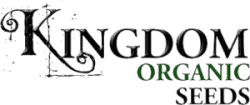
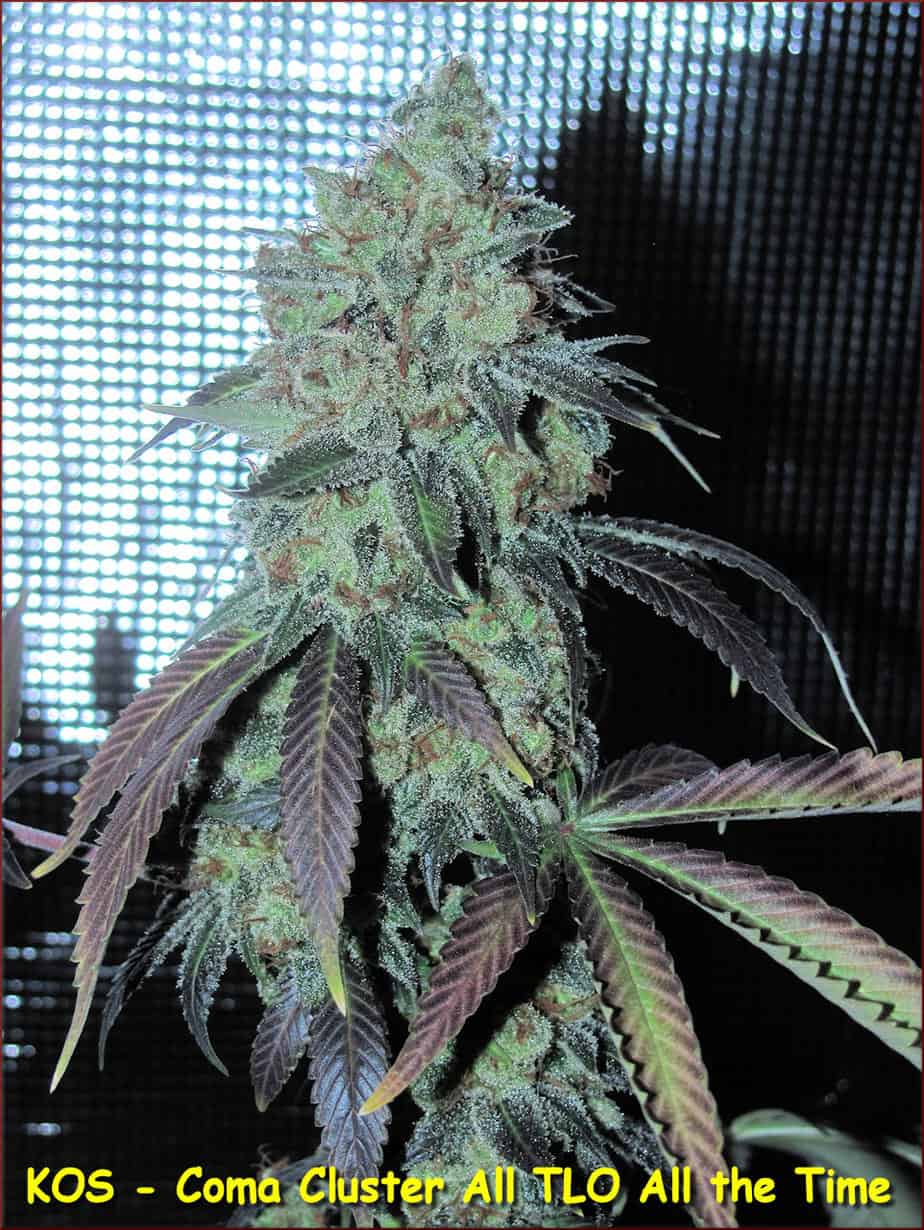
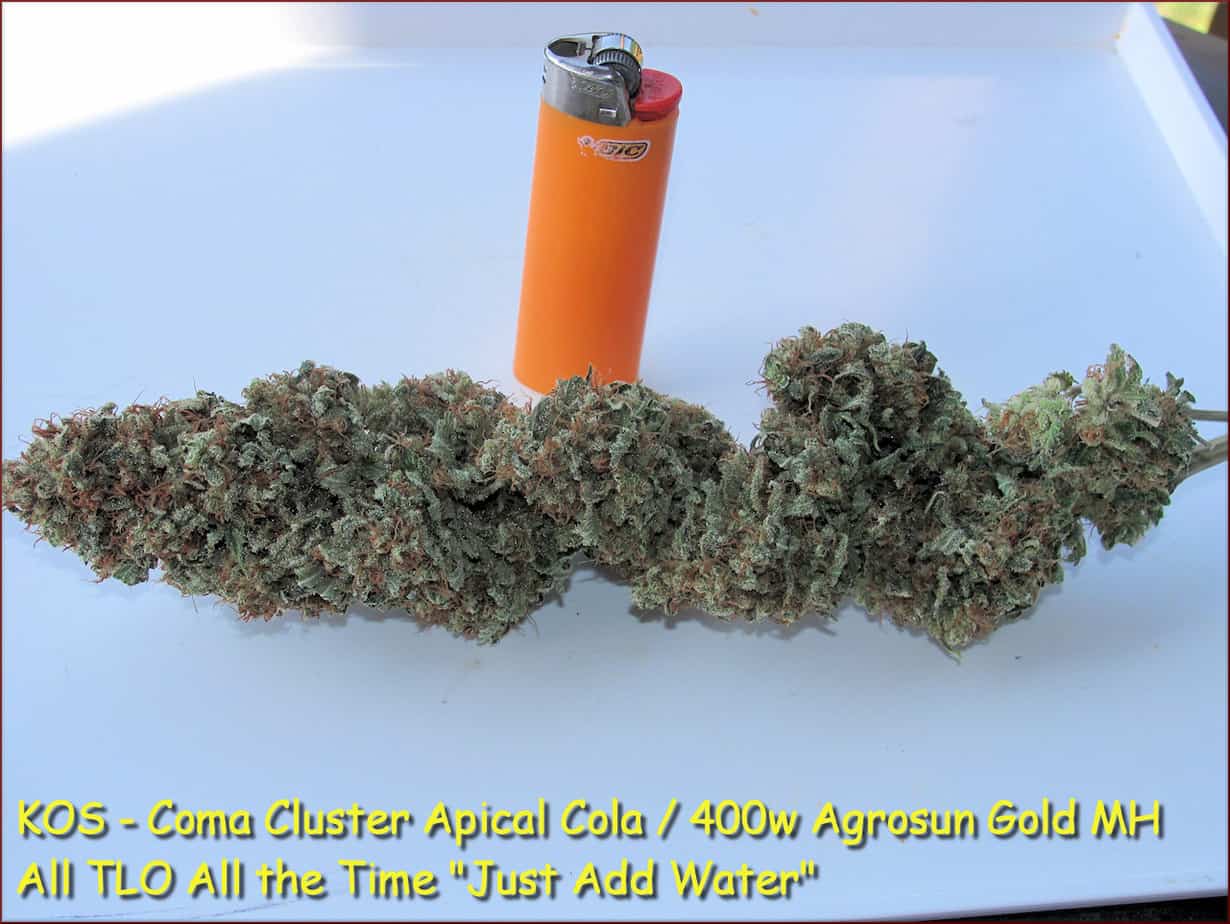
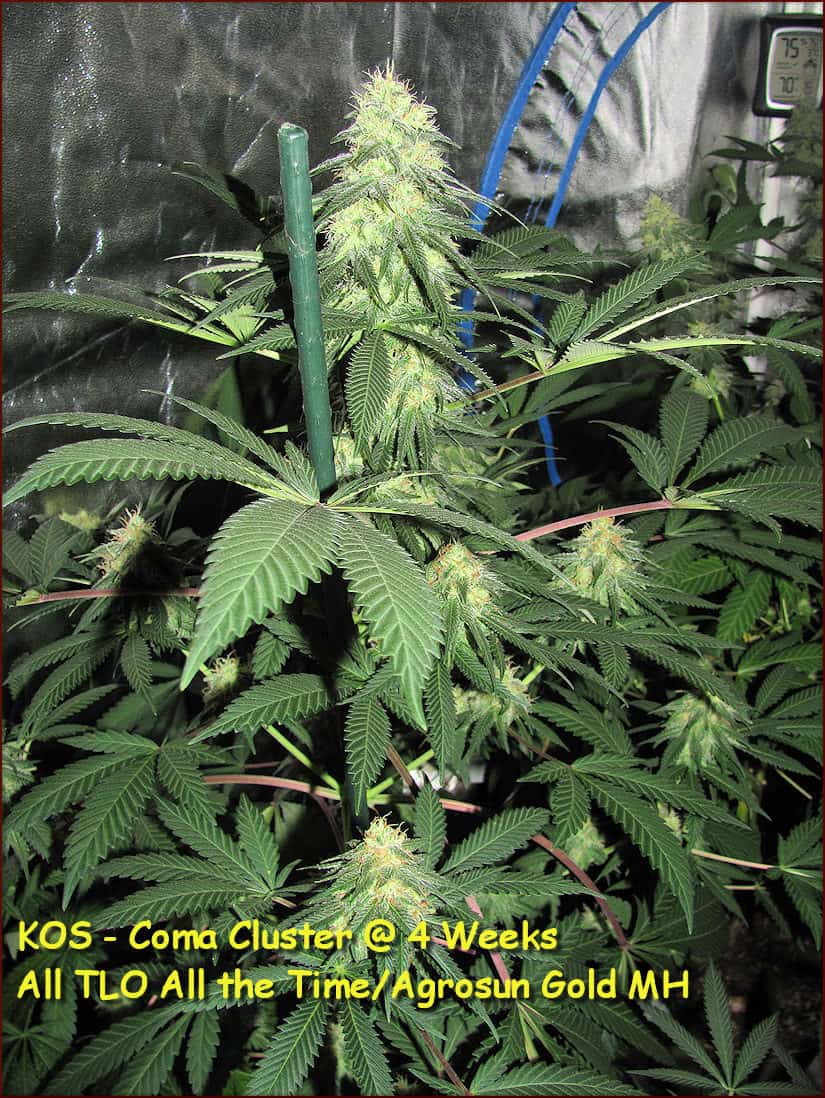
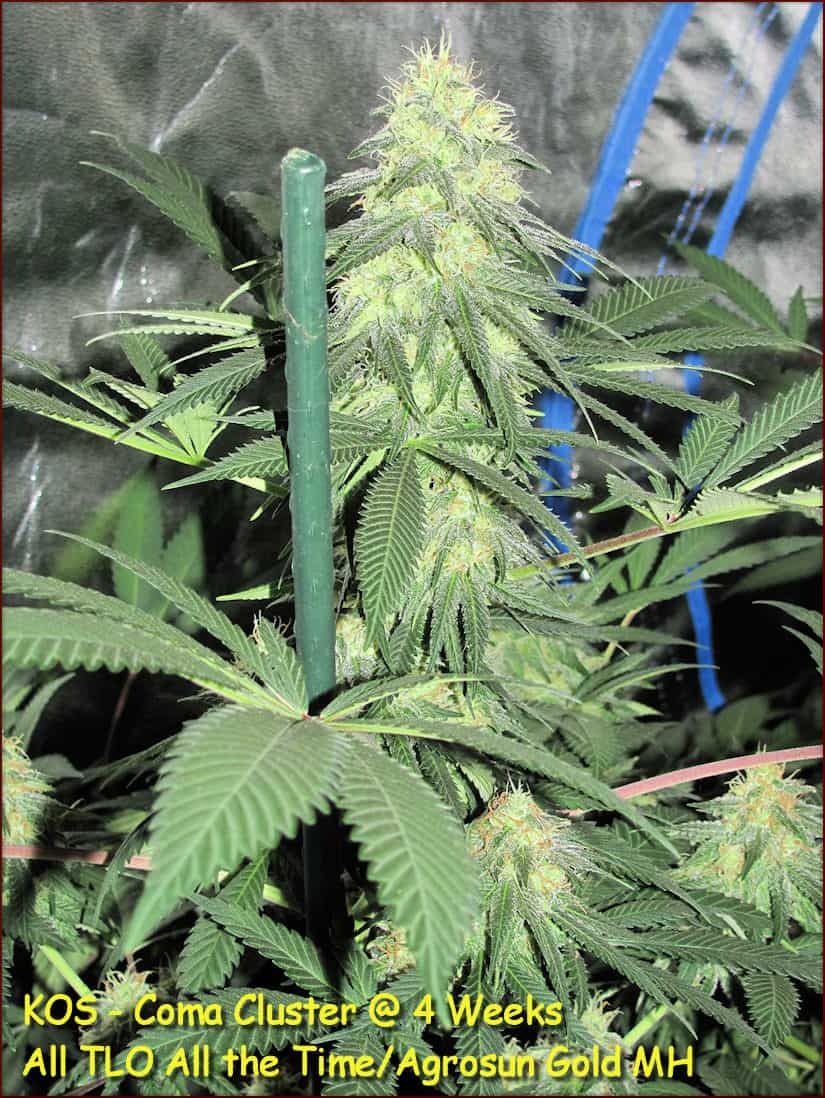
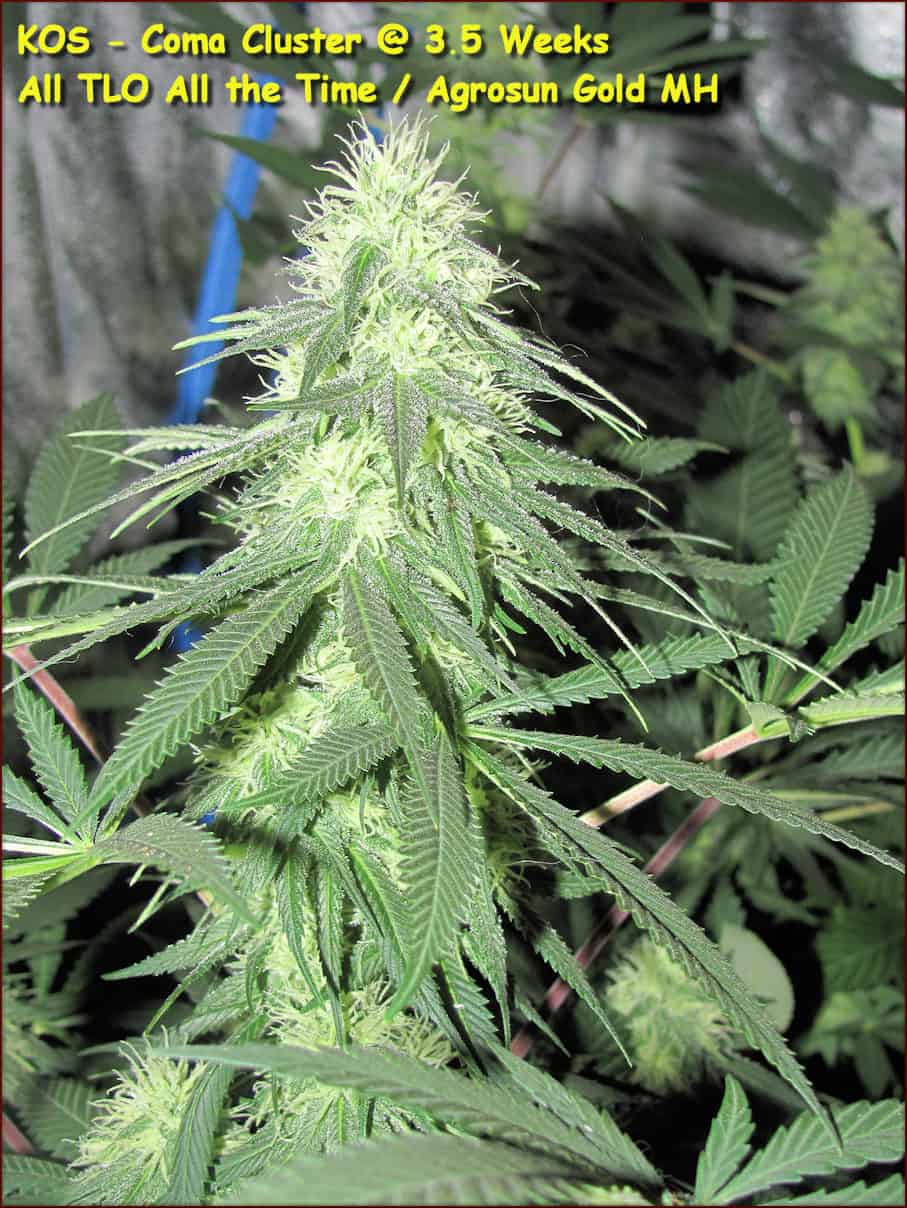
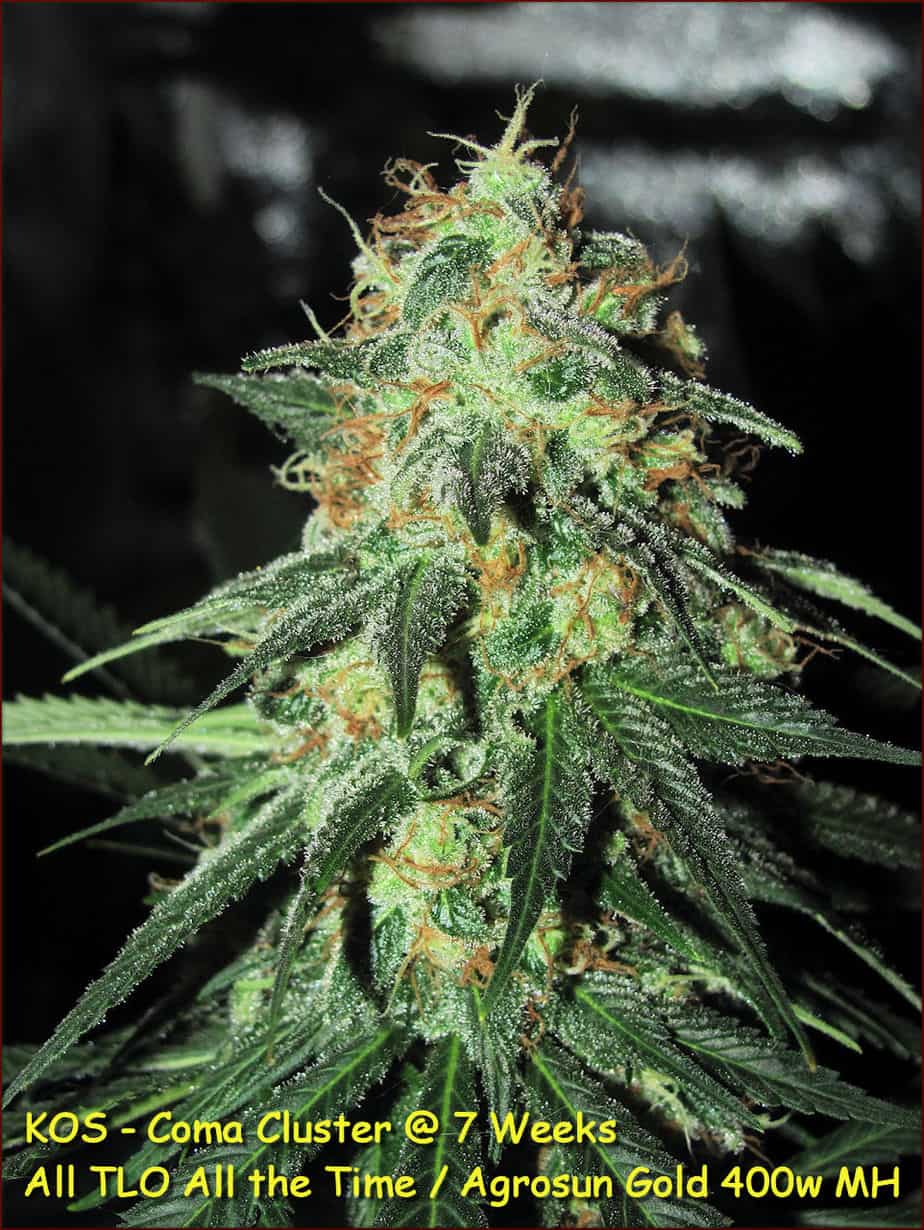
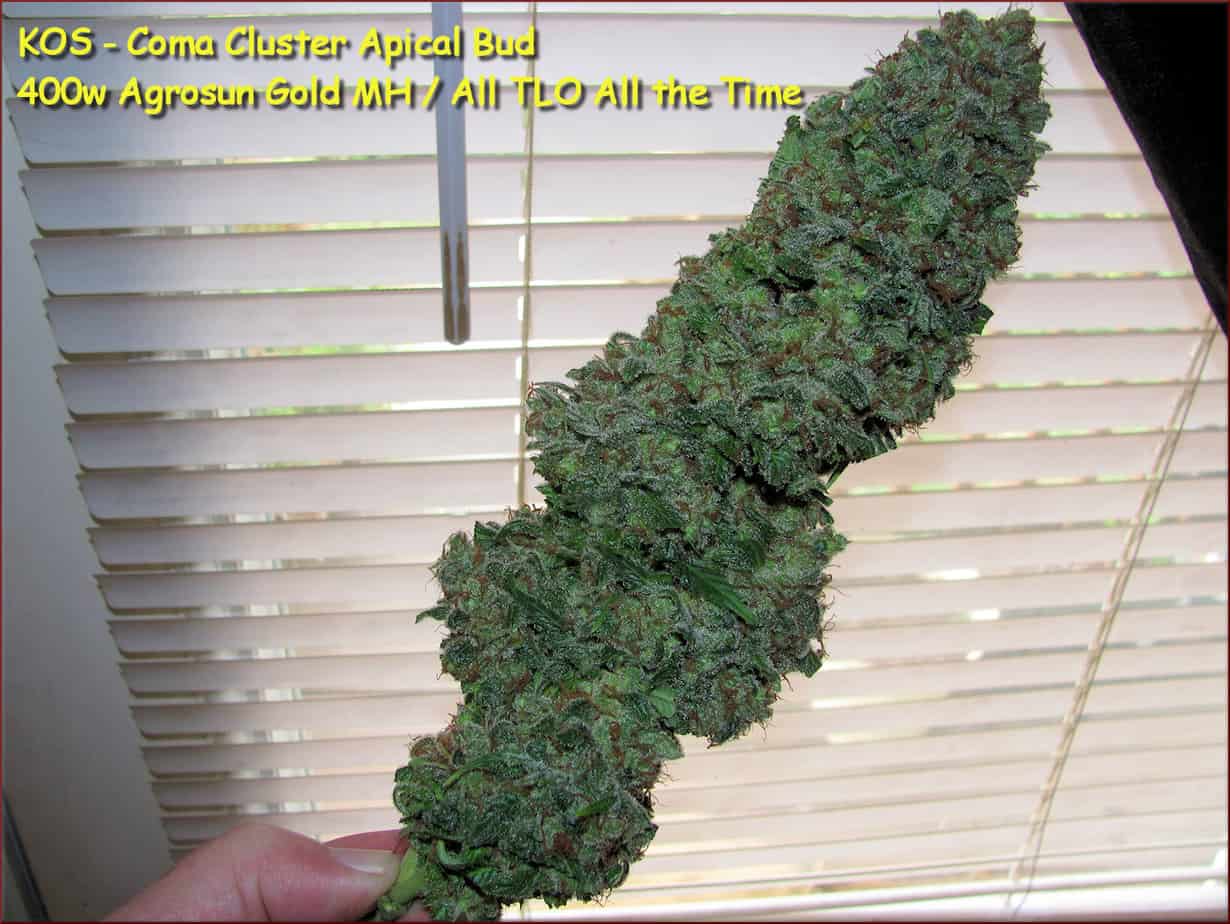
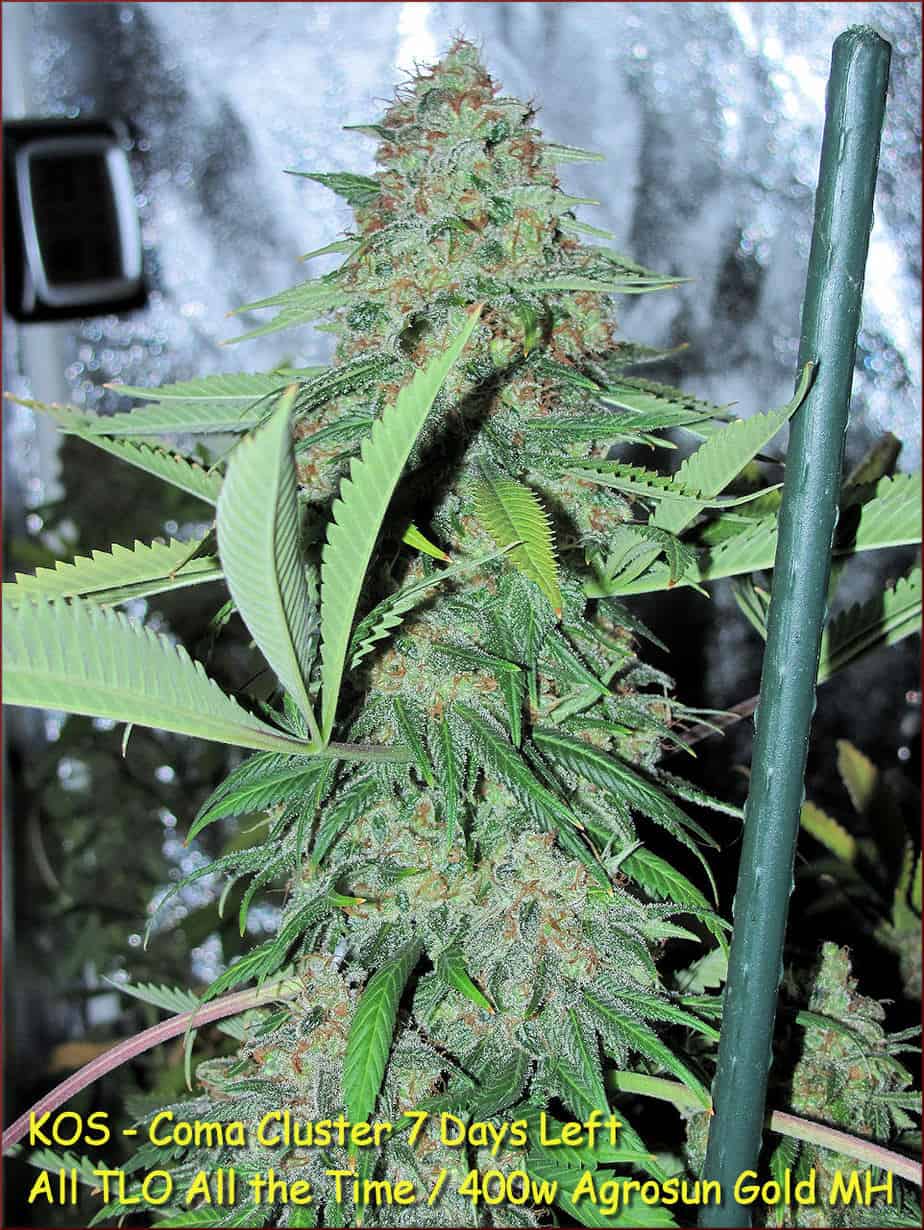
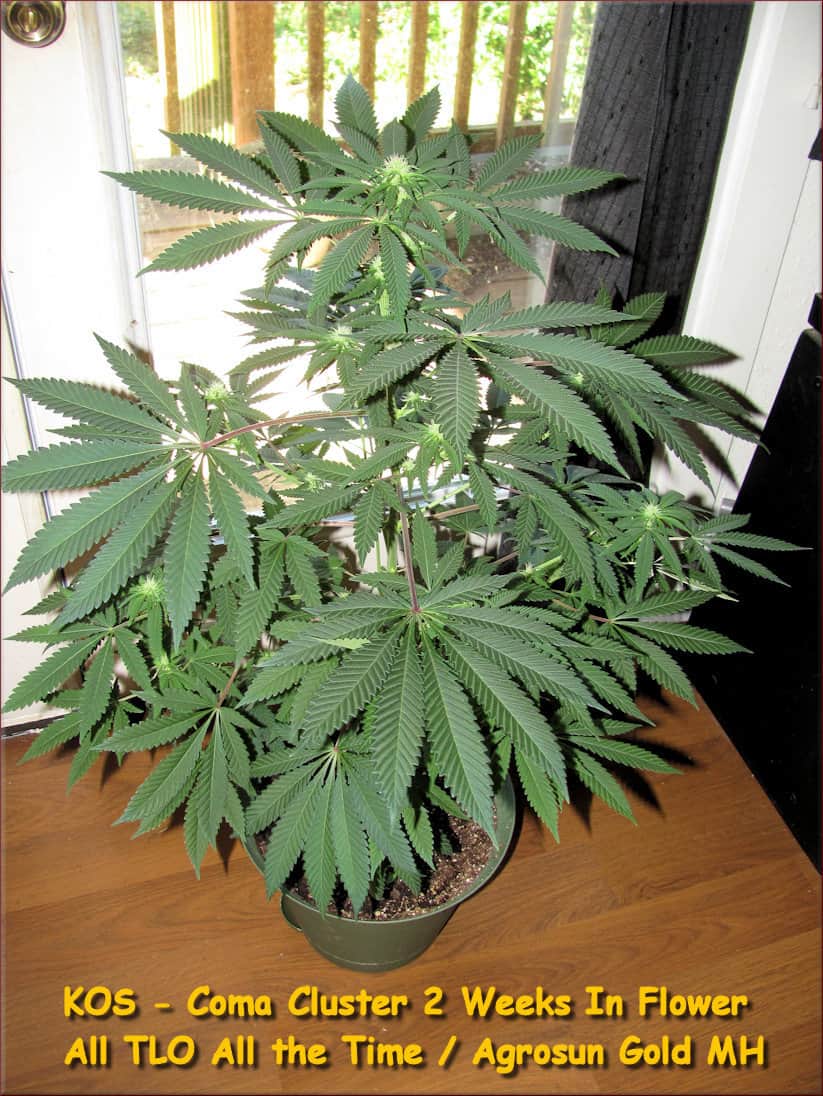
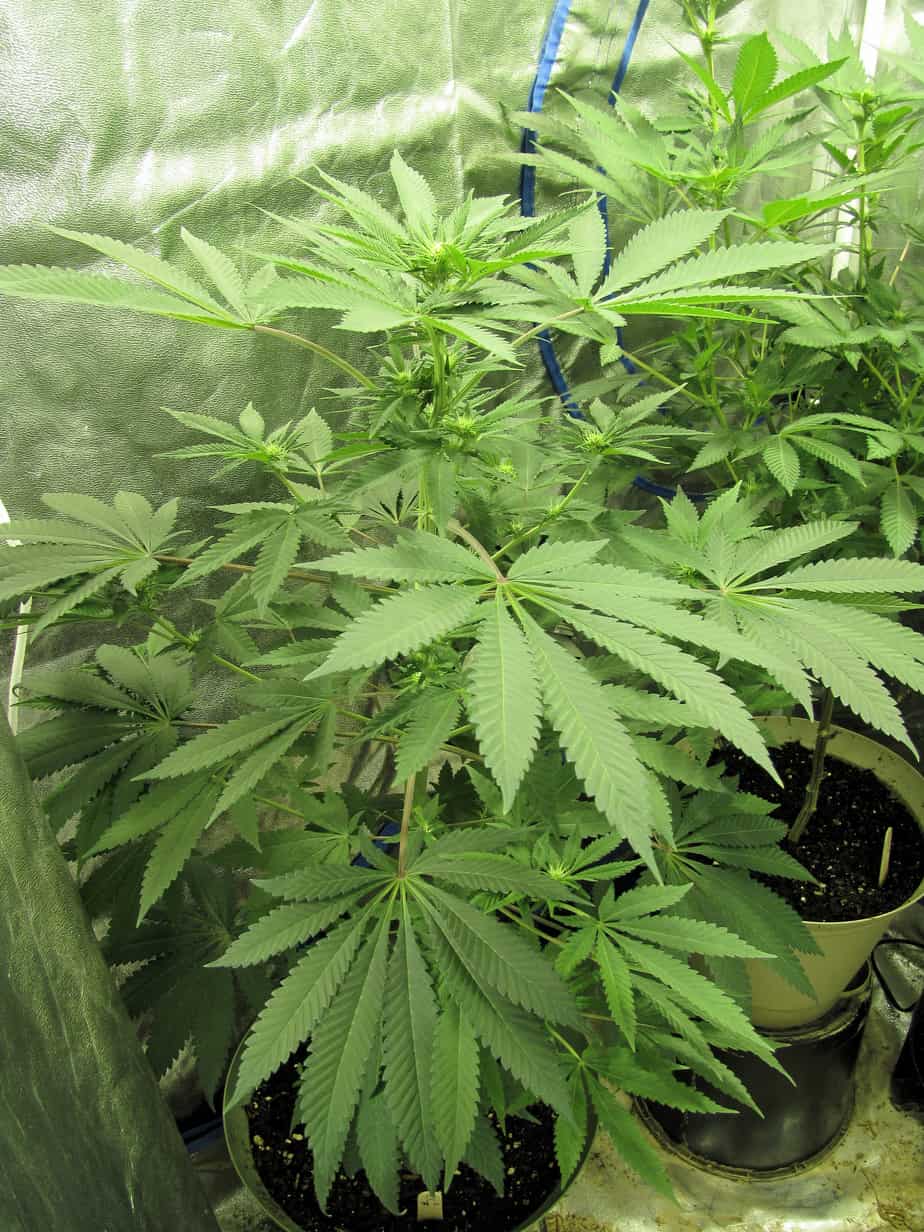
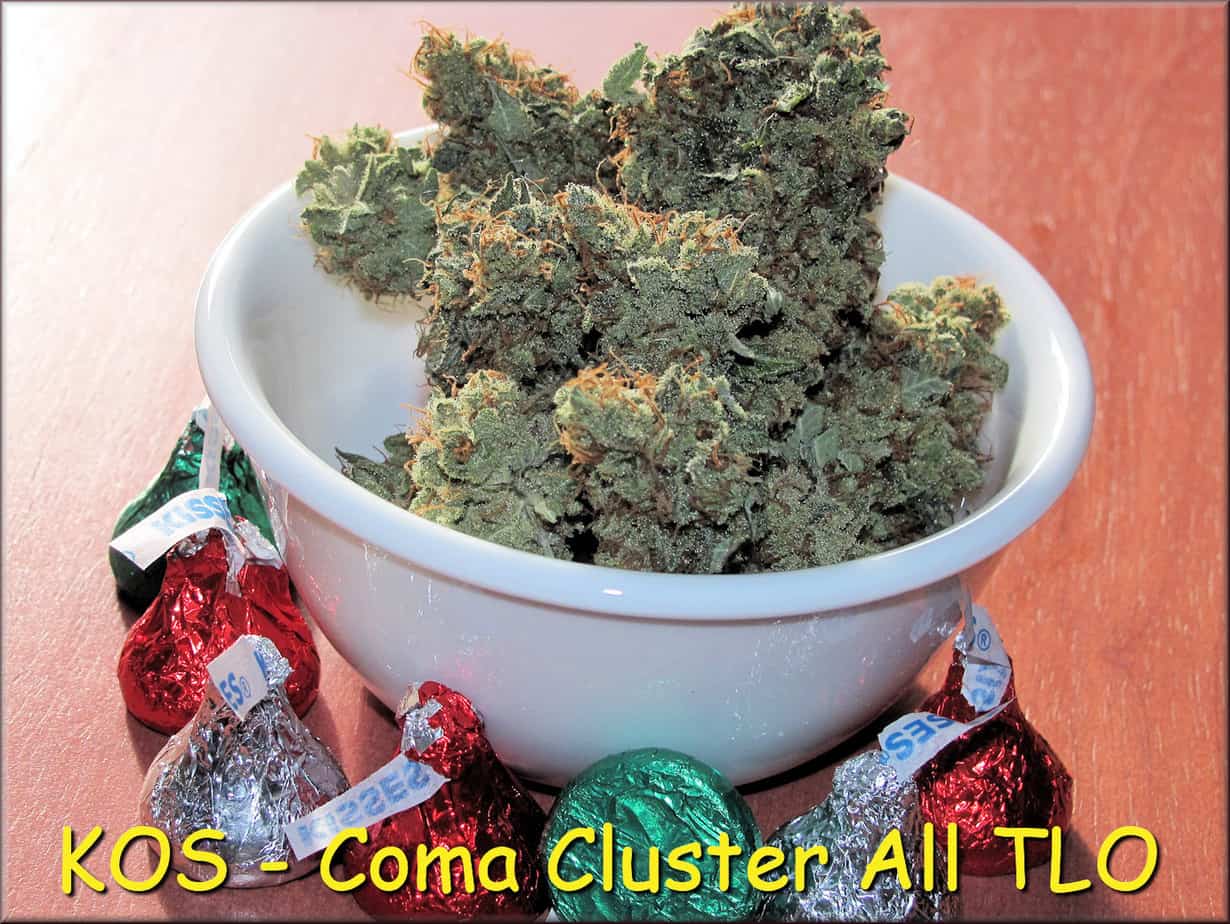
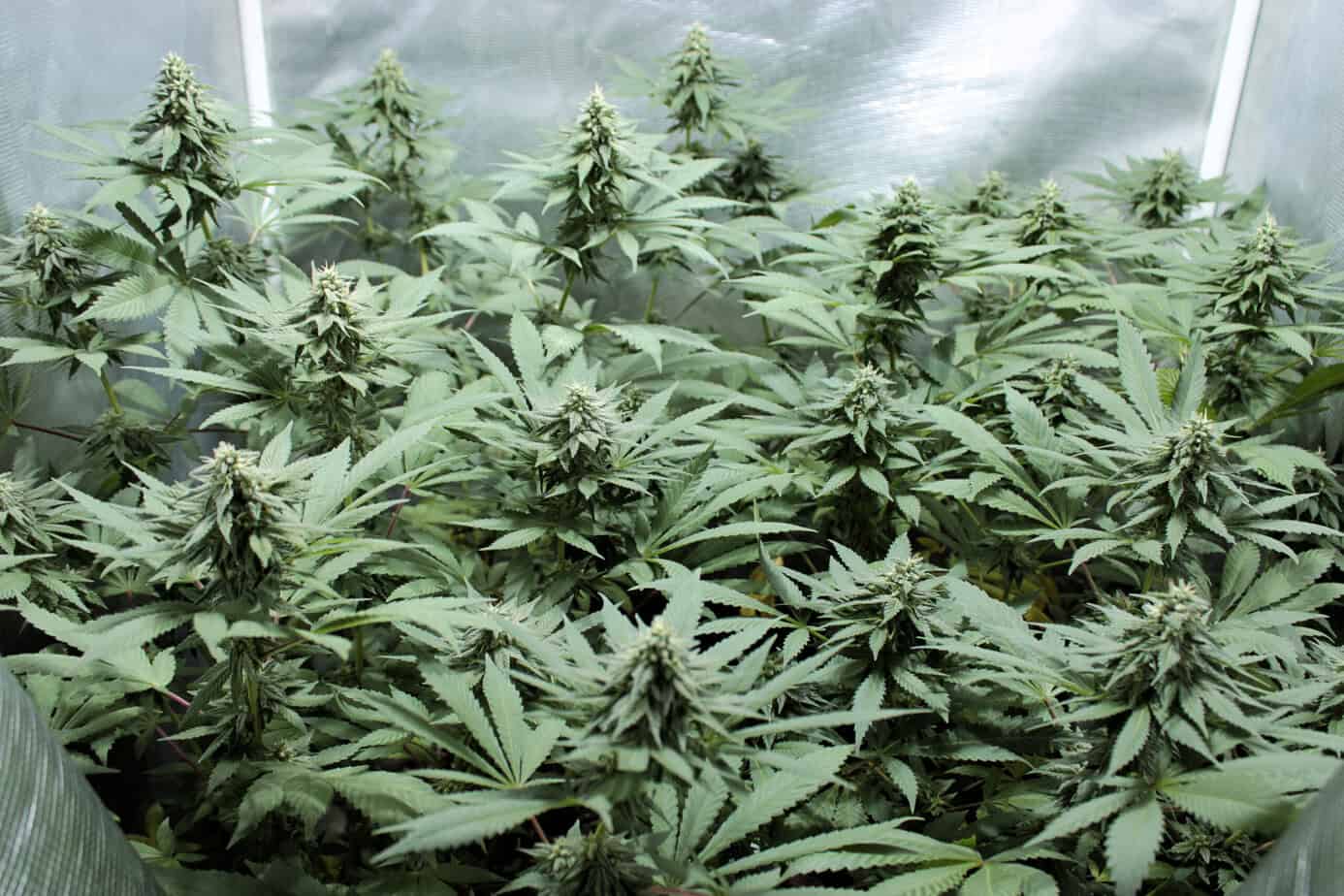
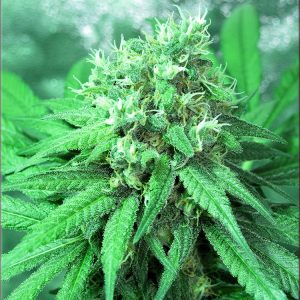
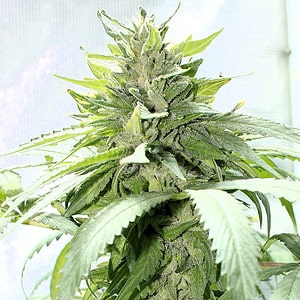
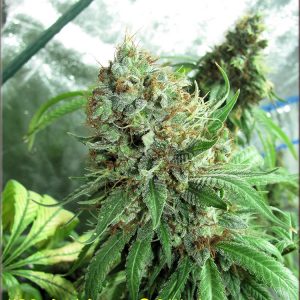
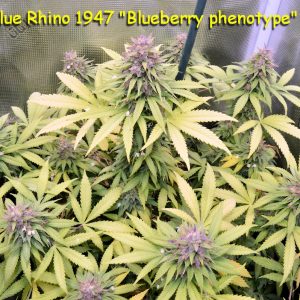
Reviews
There are no reviews yet.